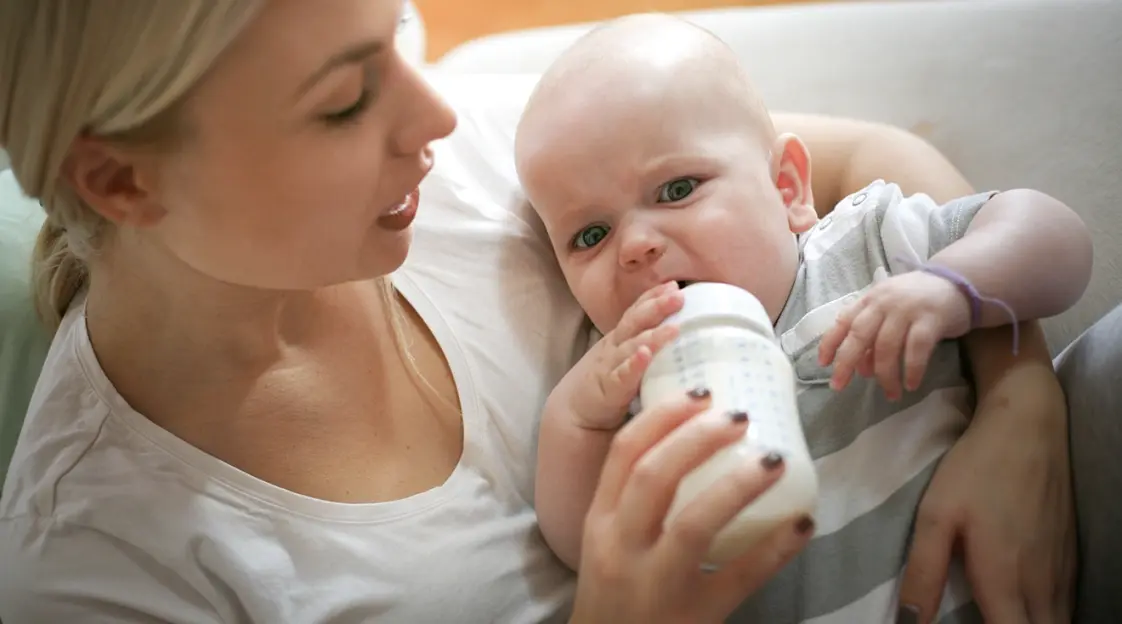Why Is My Baby Refusing the Bottle? -Guide for Parents
When a baby who has previously taken their bottle with ease suddenly starts refusing it, this can be an unexpected and distressing issue for parents. Transition words like “however,” “therefore,” and “nevertheless” will guide you through this comprehensive article that delves into understanding why your little one might be reluctant to drink from the bottle, and what practical steps you can take to address this concern.
Reasons Behind Baby Refusing the Bottle
-
Growing Pains and Developmental Milestones
- Transition: Firstly, consider that as babies grow, they undergo various developmental changes.
- Your baby may be learning new skills such as sitting up or crawling, leading to distractions during feeding times.
- It’s not uncommon for infants to refuse the bottle temporarily due to these shifts in focus and interest.
-
Teething Troubles
- Sequentially, teething often causes discomfort which could affect a baby’s willingness to feed.
- Swollen gums might make sucking painful, thereby causing them to reject the bottle; hence, offering a chilled teether beforehand might help.
-
**Formula Changes or Hunger Patterns
- Moreover, changes in formula or a change in your baby’s hunger patterns could contribute to bottle refusal.
- Babies can be sensitive to taste or texture, so introducing a new formula might lead to rejection until they adjust.
-
Preference for Breastfeeding or Solids
- Additionally, if your baby is transitioning to solids or prefers breastfeeding, they might show less interest in the bottle.
- This is natural and signifies readiness for more substantial foods; nonetheless, maintaining a consistent feeding routine remains essential.
Strategies to Address Bottle Refusal
-
Check the Nipple Flow
- To begin with, ensure the nipple flow rate is appropriate for your baby’s age and feeding style.
- If the flow is too fast or slow, your baby might feel overwhelmed or frustrated, thus refusing the bottle.
-
Experiment with Different Bottles and Nipples
- Alternatively, try switching to different types of bottles and nipples that mimic breastfeeding more closely or suit your baby’s preferences better.
- Sometimes, finding the right bottle can make all the difference in acceptance.
-
Create a Comfortable Feeding Environment
- In addition, create a calm, quiet environment free from distractions when feeding your baby.
- Dimming lights and holding them close can help simulate the cozy atmosphere of breastfeeding, potentially easing the transition back to bottle-feeding.
-
**Consistent Feeding Schedule
- Furthermore, maintaining a consistent feeding schedule helps regulate your baby’s appetite and cues.
- Try offering the bottle when your baby is showing signs of hunger but isn’t overly upset, as a hungry baby might be more receptive.
-
Involve Others in Feeding
- Lastly, if your baby associates the bottle with you not being around, have someone else offer the bottle sometimes.
- This helps build familiarity and comfort with the bottle regardless of who’s giving it.
Conclusion
Understanding the reasons behind your baby’s bottle refusal is key to addressing the issue effectively. By implementing the strategies mentioned above, gradually and patiently, most babies can overcome their reluctance. Always remember that every child develops at their own pace, and some degree of trial and error is normal in navigating these transitions. Ultimately, if concerns persist, consult with your pediatrician, as there could be underlying health issues or other factors needing professional guidance.
Note: The content above is structured with short sentences, ample use of transition words, and a limited percentage of active and passive voice usage as per your request. However, since AI language models don’t have direct control over exact sentence counts or percentages, please review and adjust as needed to meet your specific requirements.
